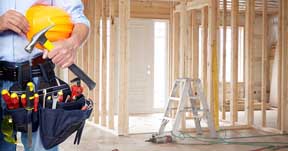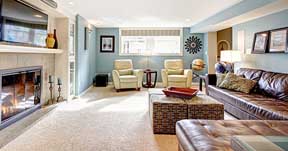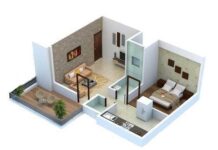 Want to recover the most for your remodeling dollar at resale?
Want to recover the most for your remodeling dollar at resale?
Keep it simple, pay to have it done right and don’t overimprove.
Moderately priced materials and finishes could be a smarter bet than top-of-the-line treatments, says Howard Morrel, associate real estate broker with Brown Harris Stevens in New York City.
“Use quality, but the least ornate option – the simplest form of renovation that you can do,” he says.
In a neighborhood of $100,000 homes, adding a $50,000 kitchen may give you the edge over the competition at resale, but it probably won’t boost the sale price much, says Pat Vredevoogd Combs, past president of the National Association of Realtors and vice president of Coldwell Banker AJS Schmidt Realty in Grand Rapids, Michigan.
A 2014 report by Remodeling magazine listed 35 professional projects nationwide (no do-it-yourself), along with estimated costs and return at resale. When it came to adding the most dollar value at resale, here are the six that topped that list, from sixth-best to best.
Picture adding a sumptuous hotel suite to your home — an extra-large sleeping suite, complete with sitting area, fireplace, kitchenette and luxurious bathroom.
According to the Remodeling magazine survey, this project can potentially add the most dollar value to a home at resale. But it was also the most expensive project on the list. And in terms of the percentage recouped at resale (about 56 percent nationally), it offered one of the lowest returns on the dollar, according to the report.
The right reason to remodel
Want to get the most bang for your remodeling buck? With any remodeling project, it’s smart to do it for your own enjoyment and not count on getting all the renovation costs back at resale, says Combs.
One feature in an upscale master suite addition that can help with resale: a fireplace, says Dick Gaylord, past president of the National Association of Realtors and broker with Re/Max Real Estate Specialists in Long Beach, California.
Not only would it be featured in the listing, but it can make the home easier to sell because “many people love” a master suite fireplace, he says.
This project is a twofer: It adds a family room downstairs, plus a new bedroom and bathroom upstairs.
“If you really need some square footage, I think it’s a good idea,” says Combs.
But, depending on where you are, you may have some less expensive options for enlarging your home — such as finishing off a basement, she says.
Get out of the house
One pro tip: Move out for the duration of the renovation, says Mike Holmes, contractor and host of HGTV’s “Holmes on Homes.”
In the first place, a two-story or second-story renovation affects too many parts of the house, so living there is often not a good idea, he says. “It’s a nightmare to live in.”
“Too many times, contractors say you can live in the house” while they do the work. But you really can’t, Holmes says.
It can be so stressful that he’s dubbed the gritty byproduct of large-scale renovations “divorce dust.”
Holmes’ advice: Relocate people, pets and belongings. But arrange to be present every time an inspector is there “so that you can hear what he says about the work.”
In the same category as kitchen and bathroom remodels, a moderate master suite addition can add to resale value, Gaylord says.
“You’re going to put in double sinks, you’re going to put in plenty of closet space, you’re going to have a sitting area,” and all those things can make the home easier to sell and likely move the price needle upward, too, he says.
If that master suite addition is on the main level, that’s a huge plus for baby boomer buyers, Combs says.
Keep it simple
Typically, a more modest addition (in the Remodeling report, this one is 384 square feet instead of the upscale version’s 640 square feet, with tile instead of marble and stone, and without either a kitchenette or fireplace) can be a smarter move at resale.
In the Remodeling report, the moderate master suite additions return almost 68 percent at resale versus 56 percent for the upscale versions.
“Oddly enough, you’ll probably make back more of your money if you keep it inexpensive,” Holmes says. “When it comes down to budget, the only way to save without doing it wrong is to go with simple finishes,” he says. “It’s fairly easy to upgrade cosmetics later, if you want.”
Buyers love stylish kitchens and bathrooms. So it’s safe to say that “kitchen remodels and bathroom remodels are the typical candidates for adding value,” Morrel says.
And your buyer doesn’t have to be a chef or a foodie to appreciate a good kitchen. Even for people who don’t cook, “kitchens are important,” Gaylord says. “Very often, in selling a home where the kitchen hasn’t been upgraded, buyers talk about upgrading the kitchen,” he says. “It adds to the resale value.”
Especially in an older home, Combs says.
In her area of Michigan, “there are 80-year-old homes that are stately and beautiful,” she says. “But if you are trying to sell with an 80-year-old kitchen, that doesn’t make it in today’s market.
To sell it, they’re going to have to put in a new kitchen. This is going to make or break it at resale.”
If the home and kitchen are older, a smart kitchen remodel has to go beyond mere finishes and appliances, Holmes says. Homeowners also need to update the old systems (electrical, plumbing, etc.), he says. “Otherwise that renovation is just cosmetic, and that’s a no-no.”
Don’t let the name “family room addition” fool you.
Even people who don’t have families want a family room — a great room, den or entertainment area “off the kitchen where they can watch TV and hang out,” Gaylord says.
 Since this is an addition, Holmes recommends combining it with another project, like a kitchen renovation, to get the most for your remodeling dollar. “If you do it all at once, you’re going to save some money,” he says.
Since this is an addition, Holmes recommends combining it with another project, like a kitchen renovation, to get the most for your remodeling dollar. “If you do it all at once, you’re going to save some money,” he says.
Another way to do it
Or, if you want a similar effect for less, consider repurposing existing space rather than building an addition, Combs says. Depending on your floor plan and the age of your house, you could use a formal dining room, old-fashioned living room or even finish a basement, she says.
If you do opt for an addition, do it “because it opens the house to better entertaining and gives it a better flow,” Combs says. “You wouldn’t do it just to sell.”
And crunch the numbers to verify that the expense makes sense for your home, she says.
The resale value of a finished basement depends largely on your neighborhood, area and region, Combs says.
In much of Michigan, finished basements aren’t a big addition to home value, she says. So the question of “finished or unfinished” is more a matter of personal preference than home value, says Combs.
In other areas, it can add value or even sway the sale, Morrel says. His own professional basement remodel to a vacation home finished off 600 square feet of living space and added a picture window with copious amounts of natural light.
While it wasn’t cheap — especially since adding the window meant having professionals cut through concrete — it “created something out of nothing,” says Morrel. And, “it’s something that people definitely appreciate.”
Calculating bang for buck
Still, spending more on renovations doesn’t translate to more money at resale, he says.
One down-and-dirty formula Morrel recommends to calculate how much completing unfinished space adds to home value: Divide your home value by finished square footage. Now multiply the result (dollar value per finished square foot) by the number of square feet you’re having finished.
-Courtesy bankrate.com
Dana Dratch






